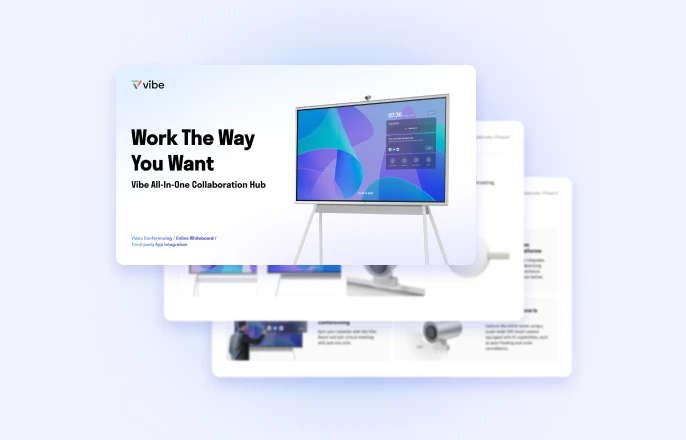Almost 2 years ago, due to factors outside of their control, many organizations around the world were forced to close their offices and ask their employees to work remotely. As of this summer, nearly 13% of all American workers still work remotely, with some states having over 30% of their workforce working from home. With numbers like these, it’s safe to say that remote work isn’t going away completely anytime soon.
But being a newly remote-friendly or remote-first office doesn’t mean that company headquarters are shuttered forever. As more people return to the office, you should have a plan for easing into a remote-work setup for those who prefer it.
Below, we’ll discuss some of the benefits of offering remote work and review remote work model options to help you determine which structure makes sense for your company.
The benefits of a remote work model
With so many companies across numerous industries experimenting with remote work, people have discovered many unexpected benefits of this work arrangement.
Remote work builds a sense of trust
A lot of trust goes into hiring a remote worker. You need to believe that they'll be a self-starter who finishes assignments on time and is focused during online meetings. Giving employees the option to continue working remotely essentially tells them they’re doing a good job. This can go a long way in boosting your team’s confidence and encouraging them to keep up the good work.
It prioritizes the health and safety of the team
It's often tough for an employee to make the call to stay home. Some people worry about being judged, some can’t afford to take time off, and others worry about falling behind in their work. The resistance to calling in sick is so prevalent that a recent survey found that around 90% of office workers have gone to work when they're feeling unwell. It shouldn’t be this way. By working from home, they can get the job done in a safe and comfortable environment. It's the best of both worlds.
 A remote work model can make a big impact on work-life balance for parents.
A remote work model can make a big impact on work-life balance for parents.Employees with children have more flexibility
Parents want to provide for their families. But that doesn’t keep them from feeling guilty about returning to the workplace and putting their kids in daycare. Remote work allows for a little more flexibility. Parents can schedule focused hours around what works best for their child. This arrangement can take away some of the hassle of finding quality, affordable childcare. And if a remote work arrangement can shave off even a few days off of daycare, you might also be saving your employee some extra money.
They'll feel more in control of work-life balance
Being able to work from home makes employees feel like everyday tasks are a little easier. They can finish a household chore while also checking out a recent sales database, or schedule an important doctor’s appointment knowing they can flex their time to accommodate both their work life and their health. Remote work gives people a little more breathing room, which everyone can appreciate.
Remote workers are available more often
Yes, you should keep in mind that an employee also needs a good personal life outside of the business. But if something unexpected and urgent comes up, someone working during off-hours might be easier to reach. Plus, they’ll have all of the important material right in front of them. (Just remember that after their designated sign-off time, they don't technically owe you a response.)
 Using dual monitors is useful for those working from home in a remote work model.
Using dual monitors is useful for those working from home in a remote work model.Types of remote work models
Not every remote work model is the same. Here are a few options to consider.
Hub-and-spoke
Bessemer Venture Partners describes the hub-and-spoke model as, "A company has an HQ and a network of regional hubs to tap into talent across markets." While this model existed before COVID-19, the idea of working remotely was traditionally limited to working at a regional office. That idea has now expanded to working from wherever is most convenient for the individual.
That being said, real estate service and investment firm CBRE notes that the central headquarters and regional offices were "meant to work hand-in-hand with the rise of remote work and flexible workspaces." (And that was even before anyone knew what kind of workplace upheaval 2020 would bring.) Now that "spokes" have come to include home offices, vacation rentals, and other locations where people can safely keep to themselves while working, more companies are realizing that they might not need as much office space as they once did.
Fast Company points out that, "[C]ompanies are facing the quandary of how not to waste money on office space when people are working from home most of the time, but also how office space can be available when workers want or need to come in." In this situation, committing to a hub-and-spoke setup makes sense. It allows people to work outside of the office for as long as necessary while still having the option to return once it’s safe to resume normal office protocols.
Related: Get On Track With These Project Management Examples
The distributed team
Of the different types of remote work, the distributed team seems to have the most flexibility in terms of definition. BVP describes them as "companies with centralized offices that also support remote workers." But you could argue that this definition aligns more closely with the newer versions of hub-and-spoke that have emerged.
Taking a slightly different angle, TalentDesk.io defines distributed teams as, "a team where all members are physically located away from each other. This could mean team members are working from home, coffee shops, or co-working spaces, but that they are working where no other colleagues are based."
And finally, video conferencing company Lifesize defines distributed as "companies that have one or more employees who work in different physical locations. This blended work model may comprise on-site teams at one or more office locations as well as remote employees who work from home, coworker spaces or public spaces or on the go."
Essentially, with distributed teams, it’s likely that you have employees working for the same company in multiple time zones.
Using time zones as a defining characteristic for just how distributed a team is, Joel Gascoigne, CEO and co-founder of Buffer, imagined remote work developing along a scale. The scale ranges from teams being completely on-site to teams being completely distributed around the world.
Buffer’s remote work model breaks down as follows:
- Office-based teams
- Office based with a work-from-home option
- Remote team in a single time zone
- Remote team in many time zones (where the shift to ‘distributed’ occurs)
- Distributed team with digital nomads (more on them in a minute)
Even if almost every employee never sets foot in a central office, a distributed team will still have some type of headquarters for their company.
Related: How to Attract Top Talent Without a Fancy Corporate Office
Nomadic remote work model
For some companies, there is no longer a need for any kind of office headquarters. And for an even smaller group, there never was in the first place.
 Thanks to a nomadic remote work model, this man is working on his laptop from a park.
Thanks to a nomadic remote work model, this man is working on his laptop from a park.A company operating on the nomadic model of remote work is 100% office-free. That's right: employees work wherever they want. This creates opportunities for the company to hire globally and for those especially adventurous employees to travel while they work.
Perhaps unsurprisingly, tech companies often use this model. For example, Buffer and Toggl have been fully remote/nomadic from the start, and companies like Basecamp and Help Scout, who were once mostly remote (having just one building headquarters with employees working primarily at other locations), have sold or sublet their buildings in the past few years in favor of being totally nomadic.
Even with evolving technology and growing software solutions, a nomadic team structure won’t be the solution for everybody. (A study from remote job board WeWorkRemotely found that nearly 24% of companies who used their service had no company headquarters; not exactly a majority.) But it’s an interesting option for companies who can make it work.
Discover the right remote work model
Incorporating WFH options into the traditional work day was a big adjustment for many companies. Now that so many people have changed the way they work, creating lasting structures should seem a little less intimidating.
Employees are happier with a little bit of freedom and the knowledge that you trust in their work. Creating a remote work model demonstrates trust in your team and their ability to do their job well while flying solo. Explore our blogs to learn more about how Vibe can help you create a cohesive, creative, and collaborative remote team environment.
Vibe offers a collaborative solution combining an interactive digital whiteboard and innovative smart software. Increase engagement and efficiency at your brainstorming sessions, virtual training, and classroom sessions by integrating your favorite applications with video conferencing and an infinite, mess-free writing canvas! Collaborate today with Vibe.
Looking for the latest in interactive whiteboard technology? Check out Vibe today!








-1sbltxxq4FYxHrXrwJVLsCDNsXpqNa.webp)
-5Zp0pmSytvcuYDVs1LvuwplKuRneK0.webp)
